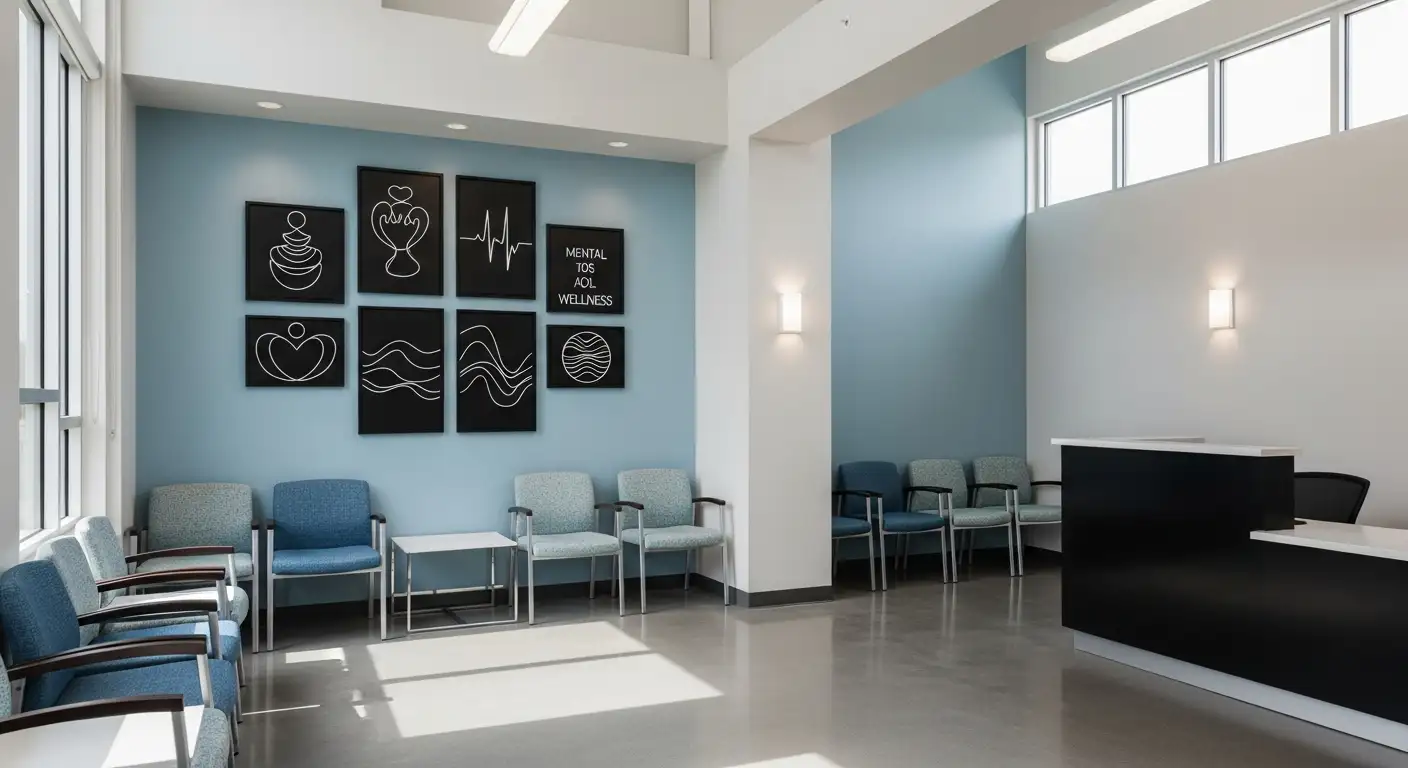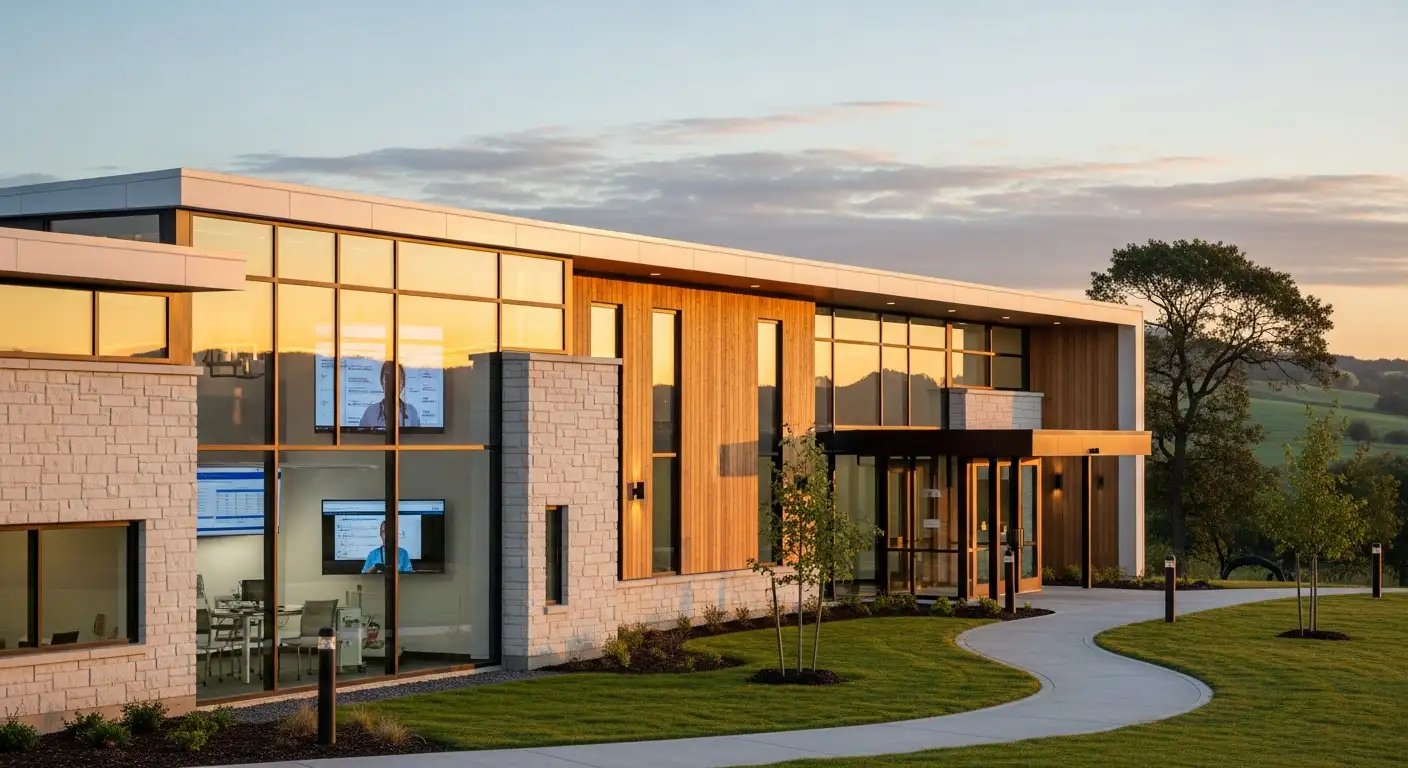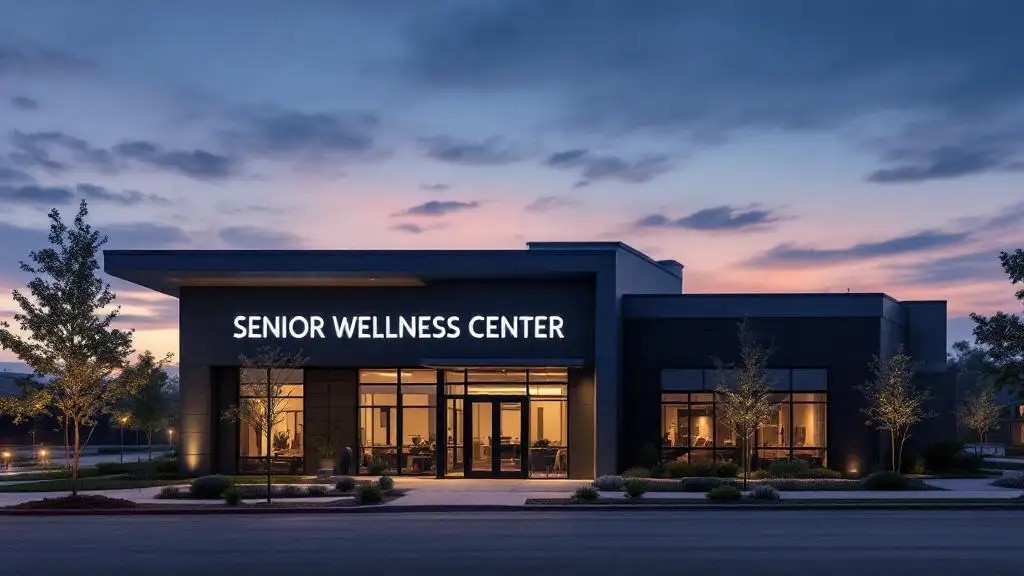Understanding the Link Between Mental Health and Physical Recovery in Seniors
The recovery journey for elder patients often extends beyond physical healing, encompassing complex mental health challenges that significantly influence outcomes. Mental disorders and substance use disorders frequently co-occur with physical ailments in older adults, complicating treatment and recovery trajectories. Recognizing and addressing these intertwined conditions through comprehensive, integrated care models is essential to improving quality of life and promoting sustained recovery among seniors.
The Prevalence and Complexity of Mental Health Issues in Older Adults
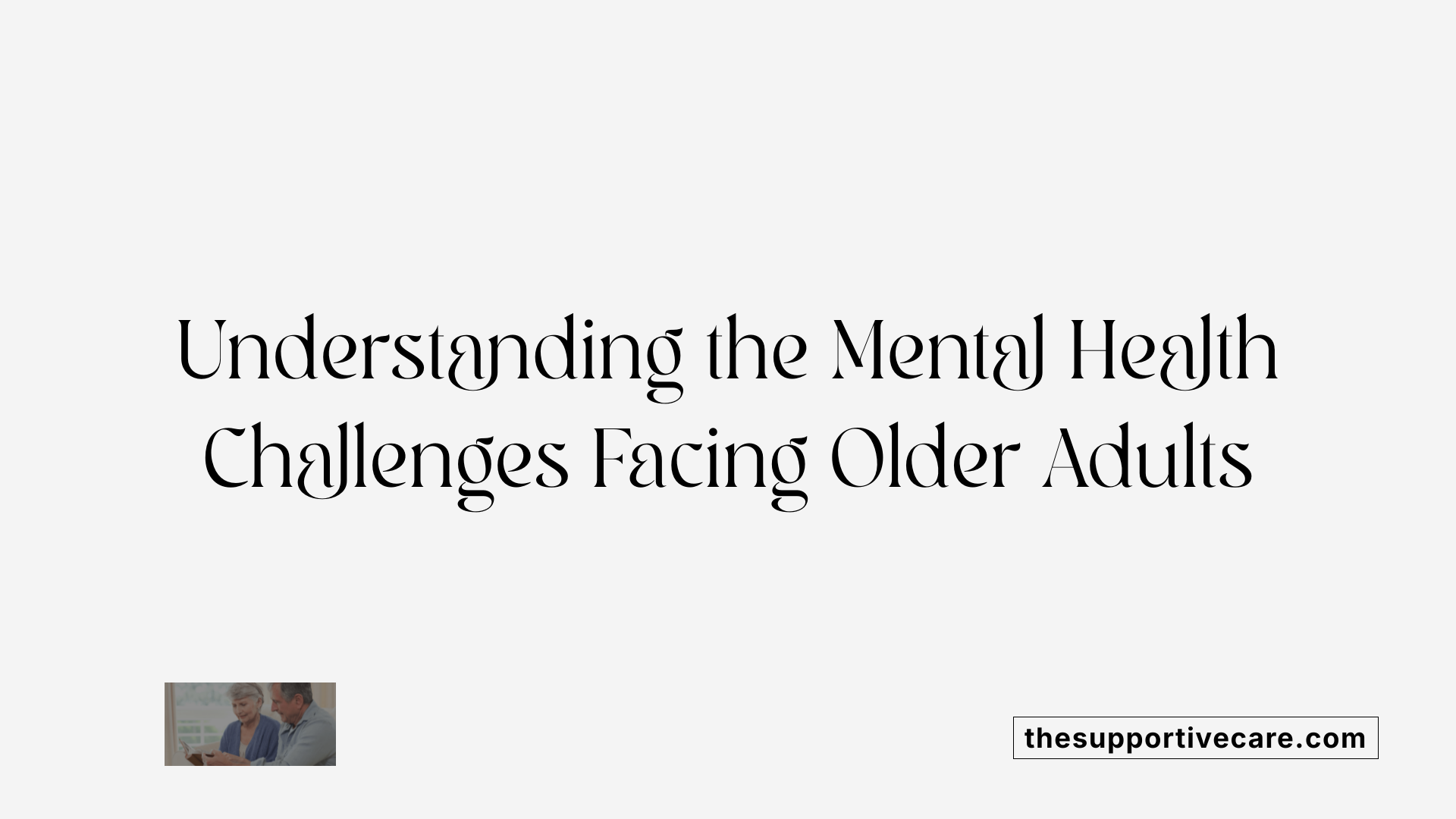
Co-occurrence of mental and physical health disorders in older adults
Older adults frequently experience multiple health challenges simultaneously. Mental disorders such as depression, schizophrenia, and substance use disorders often co-occur with physical conditions like hearing impairment and cardiovascular diseases. This overlapping of health issues greatly complicates diagnosis and treatment, requiring integrated care approaches.
Common mental disorders impacting elder patients
Among the most impactful mental disorders in older adults are neurocognitive disorders (including dementia), major depression, schizophrenia, and substance use disorders. These conditions contribute significantly to disability and reduced quality of life in this population.
Challenges in diagnosis due to overlapping symptoms
Diagnosing mental health issues in older adults is complex because symptoms can overlap with those of aging and physical illnesses. For example, cognitive decline from dementia may be mistaken for depression, or substance abuse symptoms could be concealed by medication side effects or comorbid illnesses.
What forms of addiction are commonly treated through comprehensive services?
Comprehensive addiction treatment in older adults addresses substance use disorders such as alcohol misuse, opioid dependence, and prescription medication abuse. Behavioral addictions may also be treated. Mental health disorders frequently co-occur with these addictions, necessitating integrated, multidisciplinary care to improve patient outcomes.
Social Determinants and Ageism: Barriers to Mental Health Care in Seniors
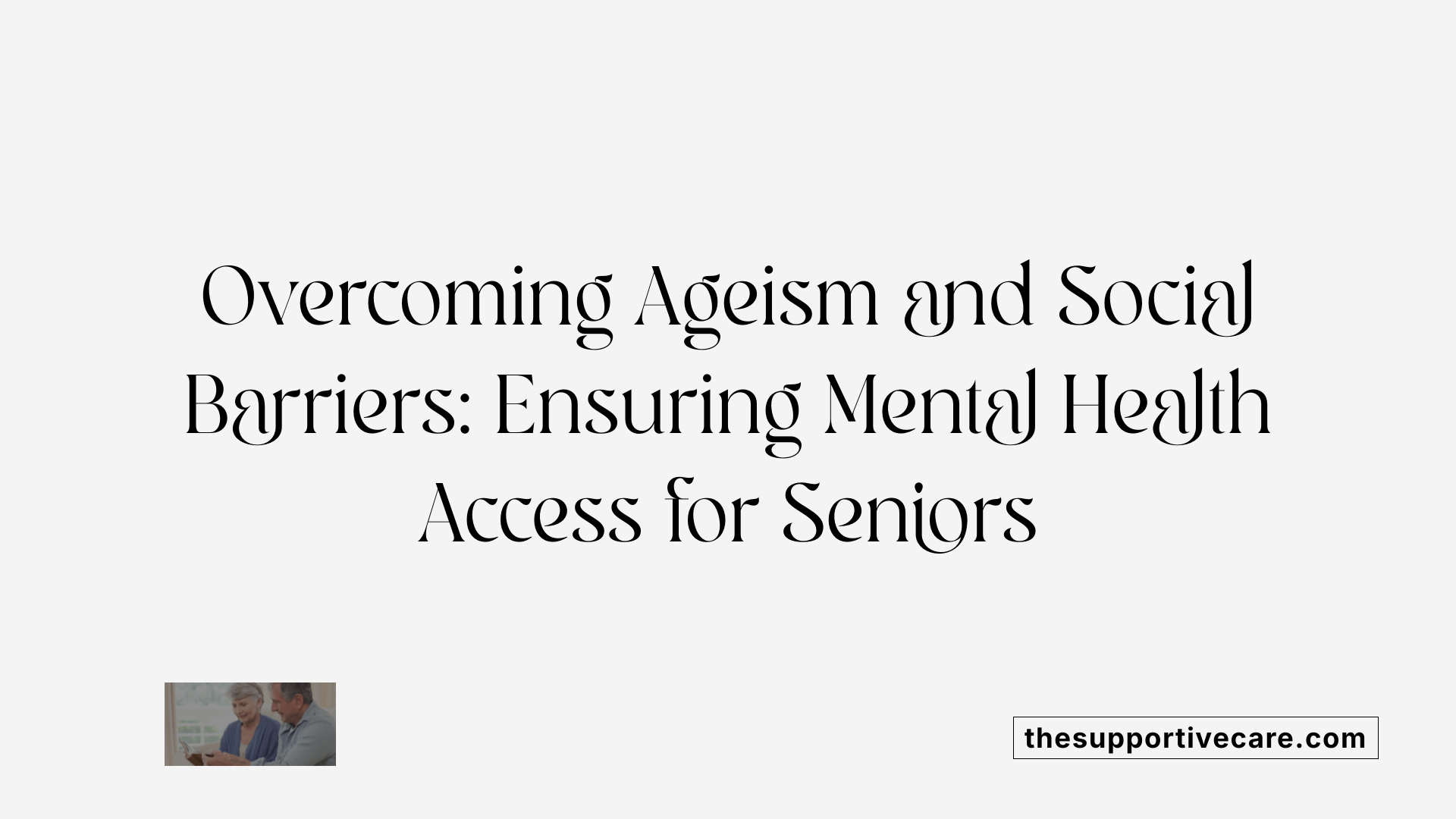
How do stigma and ageism impact mental health access for older adults?
Stigma and ageism create significant barriers for seniors seeking mental health care. Negative stereotypes and discrimination tied to age—collectively known as ageism—contribute to poor mental health outcomes by discouraging older adults from acknowledging symptoms or seeking help. Ageism is recognized internationally as a public health challenge, addressed through initiatives like the Decade of Healthy Ageing (2021-2030).
What roles do social isolation and loneliness play in elderly mental health?
Social isolation and loneliness are prevalent among older adults and are critical social determinants negatively influencing mental health. These factors not only exacerbate symptoms of depression and anxiety but also increase the risk of substance use disorders. The absence of social support can lead to decreased engagement with healthcare services and poorer recovery outcomes.
How do economic disparities and workforce shortages affect mental care for the elderly?
Economic disparities limit access to quality mental health services by restricting affordability and availability. Additionally, shortages in the behavioral health workforce pose a challenge to integrated care delivery for seniors. These structural limitations hinder early identification and treatment of mental disorders, further compounded by inadequate payment policies that fail to incentivize sufficient workforce expansion.
Addressing these social determinants requires coordinated community programs, increased workforce training, anti-stigma campaigns, and policies fostering equitable access to comprehensive mental health services tailored for older adults.
Integrated Care Models: A Multidisciplinary Approach to Elder Mental Health and Addiction
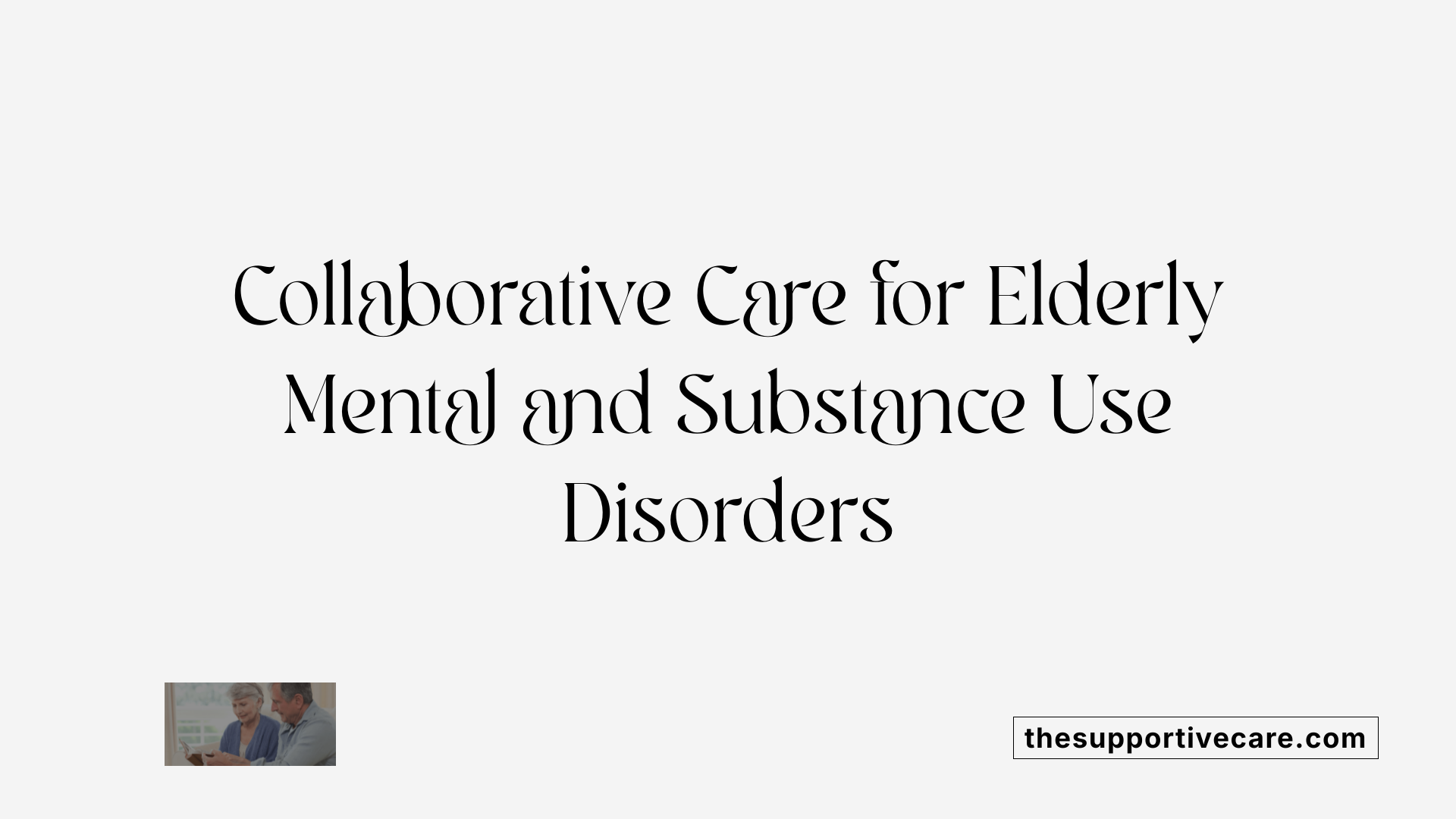
What are the core components of integrated and collaborative care models?
Integrated care models for older adults with mental health and substance use disorders hinge on several critical elements. These include proactive patient identification to catch issues early, team-based care settings where providers collaborate closely, and information sharing through shared electronic health records. Ongoing care management ensures continuous monitoring and adaptation of treatment plans. Additionally, measurement-based stepped care guides clinical decision-making based on patient progress and symptom severity. Self-management support empowers patients to participate actively in their own recovery, while linkage to social services addresses broader determinants of health. Quality improvement systems maintain the effectiveness and consistency of care delivery.
What structural elements support successful integration?
Effective integration depends on structural components like multidisciplinary care teams composed of psychiatrists, addiction counselors, social workers, and primary care physicians. Clinical information systems, especially shared electronic health records, facilitate seamless communication among providers. Real-time data on inpatient or emergency utilization helps care teams respond swiftly to patient needs. Patient-centered care plans coordinate medical, mental health, and social interventions tailored to individual needs. Financing mechanisms that reimburse these structures are essential to sustain such comprehensive approaches.
How do proactive identification and ongoing care management benefit elders?
Proactive patient identification enables early detection of mental health and substance use issues, which is crucial given that symptoms may be hidden or misattributed to aging. Ongoing care management allows for dynamic adjustments in treatment, ensuring that interventions remain effective as conditions evolve. Together, these practices reduce symptom severity, improve quality of life, and lower risks like suicide or hospitalization.
How are mental health issues integrated into addiction treatment programs?
Integrated addiction treatment programs employ multidisciplinary teams that concurrently address mental health and substance use disorders. Techniques such as cognitive-behavioral therapy and motivational interviewing are combined with coordinated medication management. This holistic approach improves patient outcomes by tackling the interconnected nature of mental illness and addiction, especially important in the aging population where co-occurrence is common.
Comprehensive Services in Treating Substance Abuse Among Older Adults
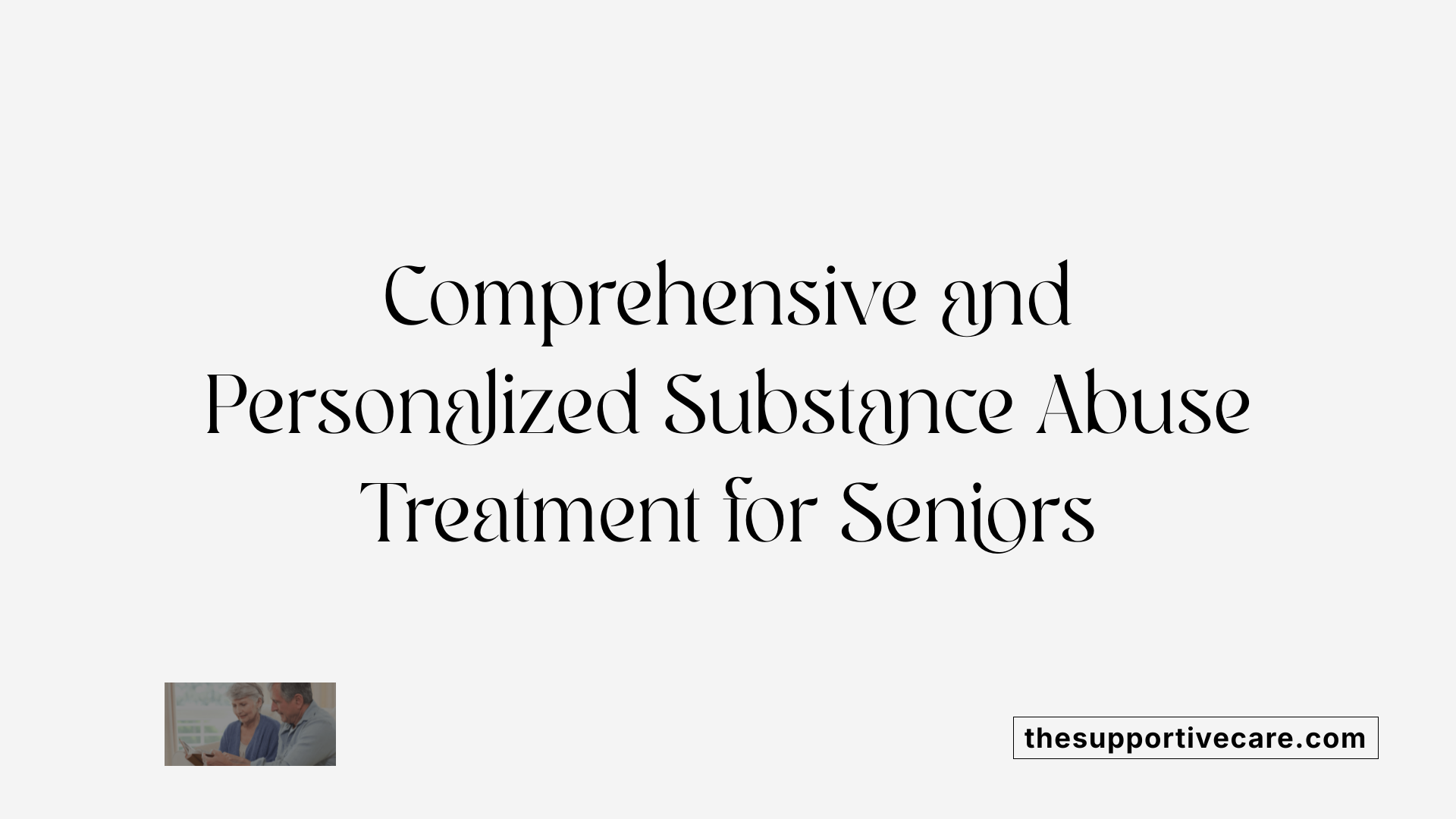
What Are the Comprehensive Treatment Services Available for Substance Abuse and Addiction?
Comprehensive treatment for substance abuse in older adults involves a holistic, multidisciplinary approach designed to address the unique needs of this population. Multidisciplinary treatment teams often include psychiatrists, psychologists, addiction counselors, social workers, and primary care physicians. This team collaborates to develop individualized care plans that consider an elder's medical history, cultural background, and personal goals.
Medical Detoxification, CBT, and Medication-Assisted Treatment
Medical detoxification is often the first step in safely managing withdrawal symptoms under clinical supervision. Cognitive Behavioral Therapy (CBT) plays a critical role, significantly reducing symptoms of depression and anxiety that frequently accompany substance use disorders in elders. Medication-Assisted Treatment (MAT) is another vital component, particularly effective in managing opioid dependence and other substance use disorders.
Support Systems Including Peer Support and Family Involvement
Beyond clinical treatment, supportive services are essential for long-term recovery. These include case management, transportation assistance, and peer support programs that enhance engagement and adherence to treatment plans. Family involvement, through education and open communication or family therapy, creates a supportive environment that empowers older adults and fosters recovery.
Together, these comprehensive services aim not just to treat addiction but to improve quality of life, address co-occurring mental health conditions, and support sustained recovery in older adults.
Challenges in Detecting and Treating Substance Use Disorders in Older Adults
Why is substance use disorder often under-recognized in older adults?
Substance use disorders (SUDs) in older adults frequently go unnoticed because many symptoms overlap with those commonly attributed to aging or chronic illnesses. For instance, cognitive impairment, sleep disturbances, and social withdrawal are often mistaken as natural aging signs rather than potential indicators of substance misuse. This symptom overlap complicates diagnosis and contributes to significant under-recognition of SUDs in this population.
What screening tools are recommended for older adults?
To improve detection, validated screening instruments such as the AUDIT-C (Alcohol Use Disorders Identification Test - Consumption) and CAGE-AID (Cut down, Annoyed, Guilty, Eye-opener - Adapted to Include Drugs) are recommended. These tools are designed to be brief yet effective in identifying risky substance use behaviors, making them suitable for routine use in clinical and community settings serving older adults.
How do physiological changes in aging increase risks related to substances?
Aging brings physiological changes such as decreased liver function and slowed metabolism, which alter drug and alcohol processing. These changes increase the vulnerability of older adults to adverse effects, including heightened intoxication, increased medication interactions, falls, cognitive decline, and respiratory complications. Consequently, even low levels of substance use can cause disproportionate harm, making early identification and tailored treatment imperative.
Addressing these challenges requires increased awareness among healthcare providers, routine screening with appropriate tools, and an understanding of the unique physiological susceptibilities of older adults to enhance timely and effective interventions.
The Role of Neurocognitive and Neuropsychiatric Disorders in Physical Recovery
How do neurocognitive disorders like dementia impact physical recovery in older adults?
Neurocognitive disorders, including dementia, significantly affect physical recovery in older adults. These conditions contribute not only to cognitive decline but also to disabilities that complicate medical treatments and rehabilitation efforts. The presence of dementia can impair a patient’s ability to follow care plans, adhere to medication schedules, and communicate symptoms effectively. This complexity often prolongs recovery times and may increase the risk of adverse health outcomes.
How are neuropsychiatric symptoms managed during recovery?
Neuropsychiatric symptoms such as agitation, psychosis, and mood disturbances frequently accompany neurocognitive disorders and interfere with recovery. Behavioral strategies are the frontline approach for managing these symptoms to minimize distress and enhance patient cooperation with treatment. Pharmacological interventions have limited evidence for efficacy and bear notable risks, making cautious use essential. Comprehensive care includes monitoring symptoms closely and adjusting management plans to balance effectiveness with safety.
What recent advances in biomarkers and pharmacological treatments support better outcomes?
Emerging research on biomarkers is transforming early diagnosis and personalized treatment for neurocognitive disorders. Techniques like amyloid PET scans, tau imaging, and blood-based markers facilitate early detection of Alzheimer’s disease and related dementias. Genetic markers such as the APOE4 allele further aid in understanding patient risk profiles. On the pharmacological front, the approval of aducanumab marks a pivotal development as the first disease-modifying drug targeting amyloid pathology. Additional therapies under investigation focus on tau proteins, neuroinflammation, and other biological mechanisms, aiming to slow disease progression and improve neuropsychiatric symptom management.
These integrated diagnostic and therapeutic innovations are crucial for tailoring interventions that support both cognitive and physical recovery in older adults afflicted by neurocognitive disorders.
Promoting Healthy Aging through Prevention and Lifestyle Interventions

How do multidomain lifestyle interventions support healthy aging?
Multidomain lifestyle interventions combine various strategies like dietary counseling, physical exercise, cognitive training, and regular risk monitoring. These approaches work together to enhance overall health and have demonstrated some efficacy in improving global cognition and delaying the progression of dementia in older adults.
What evidence supports the prevention of cognitive decline?
Clinical studies, such as the Finnish Geriatric Intervention Study to Prevent Cognitive Impairment and Disability (FINGER), provide strong evidence that multidomain interventions can yield significant cognitive benefits. These programs show that adopting healthy lifestyle changes can slow down cognitive deterioration and potentially postpone the onset of dementia.
What role do education and vascular risk control play in prevention?
Education on healthy behaviors helps older adults understand the importance of maintaining mental and physical wellness. Controlling vascular risk factors—such as hypertension, diabetes, and cholesterol—is essential in reducing the chances of cognitive impairment. Together, these measures contribute to healthy aging by addressing modifiable risks associated with neurocognitive decline.
Telehealth, Technology, and Workforce Expansion: Future Strategies in Elder Mental Health Care
How is telehealth transforming elder mental health care?
Telehealth and mobile health (mHealth) technologies play an increasingly vital role in expanding access to mental health services for older adults. These digital platforms allow for remote consultations, continuous monitoring, and timely interventions without requiring patients to travel, which is especially beneficial for elders facing mobility challenges or geographic isolation.
Remote delivery of cognitive-behavioral therapy, social skills training, and other psychosocial interventions has proven effective, facilitating personalized care that fits individual schedules and preferences. Telepsychiatry also supports ongoing care management and enhances patient engagement by connecting multidisciplinary teams in real time.
What strategies are being used to address workforce shortages?
Addressing the shortage of behavioral health professionals trained to work with older adults is critical. Strategies include:
- Expanding training programs that focus on geriatric mental health.
- Offering incentives such as loan forgiveness and higher reimbursement rates for professionals choosing this specialty.
- Promoting interdisciplinary education to encourage collaboration among psychiatrists, psychologists, addiction counselors, social workers, and primary care providers.
These efforts aim to build a well-equipped workforce capable of delivering comprehensive, team-based care to seniors with complex mental and physical health needs.
How does integrating social services improve holistic care?
Integrating social services with health care addresses social determinants that heavily impact mental health outcomes in older adults. Linking patients to community programs targeting loneliness, social isolation, stigma, and economic challenges complements clinical treatment.
This integration ensures that care plans incorporate both health and social support resources, enhancing recovery and well-being. Multidisciplinary teams work together to connect elders to family support, transportation, housing assistance, and peer support programs, fostering environments that promote sustained mental wellness.
Together, these future strategies—leveraging technology, expanding workforce capacity, and integrating social services—offer a comprehensive approach to improving mental health care for older adults, promoting equity, accessibility, and quality outcomes.
Person-Centered Care and the Importance of Family and Community Support
Tailoring Treatments to Individual Medical and Cultural Needs
Person-centered care in older adults with mental disorders and substance use issues means customizing treatment plans to reflect each individual's unique medical history, cultural background, and personal goals. This approach enhances treatment effectiveness by respecting individual preferences and addressing specific challenges such as co-occurring physical illnesses and social circumstances.
Engaging Families Through Education and Therapy
Families play a critical role in supporting recovery for aging adults. Educating family members about mental health and addiction fosters understanding and reduces stigma, while family therapy facilitates open communication. These efforts empower both patients and caregivers, creating a supportive environment that improves adherence to treatment and emotional well-being.
Community Programs to Combat Social Isolation and Stigma
Loneliness, social isolation, and stigma significantly affect mental health outcomes in older adults. Community-based initiatives provide social engagement opportunities and peer connections, which are vital for recovery. Programs that focus on reducing stigma help older adults feel accepted and encourage them to seek help, strengthening their social networks and enhancing overall mental health.
These combined person-centered, family, and community strategies form an integrated support system crucial for improving mental health and substance use outcomes among older adults.
Addressing Co-Occurring Mental Health and Substance Use Disorders for Better Outcomes
How prevalent are co-occurring mental health and substance use disorders among older adults?
Co-occurring disorders are common in older adults, with approximately 20% experiencing mental health challenges and 8-10% having substance use problems. These conditions often overlap, complicating diagnosis and treatment, and significantly impact disability and quality of life in this population.
What integrated treatment approaches improve outcomes for older adults with dual diagnosis?
Integrated dual diagnosis treatments blend mental health and addiction services into coordinated care plans. Multidisciplinary teams—including psychiatrists, psychologists, addiction counselors, social workers, and primary care physicians—collaborate to tailor holistic, person-centered care. This approach incorporates evidence-based therapies like cognitive behavioral therapy and medication-assisted treatments, alongside psychosocial supports such as family engagement and social services linkage.
How do integrated care models reduce relapse and suicide risk in older adults?
By addressing both mental health and substance use simultaneously, integrated care reduces symptom severity, improves quality of life, and lowers relapse and suicide risk. Continuous care management, team-based interventions, and supportive services like case management and peer support help maintain recovery. Engaging families further strengthens support networks, fostering sustainable wellness and resilience in aging individuals.
How are mental health issues addressed within addiction treatment programs?
Treatment programs for co-occurring disorders emphasize integrated care models that coordinate mental health and substance use interventions simultaneously. This combined approach results in notable improvements in symptom reduction, quality of life, and recovery outcomes for older patients.
Long-Term Recovery and Quality of Life for Seniors with Mental Health and Addiction Challenges
Ongoing monitoring and aftercare planning
Sustaining recovery in older adults with mental health and addiction challenges requires continuous monitoring after initial treatment. Aftercare planning is vital to identify early signs of relapse and to provide timely interventions that support stable mental health. This ongoing care often includes regular follow-ups with multidisciplinary teams who tailor care plans based on changes in the individual's health and social needs.
Healthy lifestyle and social engagement post-treatment
Maintaining a healthy lifestyle and encouraging social engagement are essential components of long-term recovery for seniors. Physical activity, balanced nutrition, and structured daily routines can improve cognitive and emotional well-being. Social involvement through volunteering, community activities, or family interactions helps reduce loneliness and social isolation, which are significant risk factors for relapse and worsening mental health outcomes.
Role of peer support and case management in relapse prevention
Peer support groups and case management services provide critical resources that assist older adults in maintaining sobriety and managing mental health conditions. Peer groups offer a sense of community and shared experience, reducing feelings of stigma and isolation. Case managers help navigate healthcare systems, coordinate services, and ensure adherence to treatment plans. Together, these supports empower seniors to sustain recovery and improve their quality of life over the long term.
Policy Implications: Financing and Systemic Change to Support Integrated Care
Limitations of Current Payment Policies and CMS Billing Code Uptake
Despite growing evidence supporting the efficacy of integrated care models for mental health, especially in older adults, current payment policies have fallen short of promoting their widespread adoption. Although the Centers for Medicare & Medicaid Services (CMS) introduced billing codes for collaborative care in 2017, uptake has remained very low. This reluctance stems largely from structural and administrative barriers that complicate the utilization of these codes by providers.
Need for Multi-Payer Financing and Workforce Incentives
For integrated care to become a sustainable reality, a strategic overhaul of financing models is essential. Multi-payer financing arrangements will be critical to adequately support both the structural components—such as multidisciplinary care teams, shared electronic health records, and clinical information systems—and the process elements like ongoing care management and quality improvement. Concurrently, expanding the behavioral health workforce through targeted training programs and incentive structures is necessary to address current shortages and enhance the capacity of care teams serving older populations.
Importance of Standardized Integrated Care Systems for Elder Populations
Older adults face unique challenges including co-occurring mental and physical conditions, stigma, social isolation, and cognitive decline—issues that integrated care models are well positioned to address. However, to optimize care delivery and improve outcomes, standardized systems incorporating shared data, person-centered care plans, and real-time utilization tracking must be developed and financed reliably. These systems will promote seamless coordination among providers, improve patient engagement, and facilitate timely interventions for this vulnerable group.
Enhancing Recovery through Integrated Mental Health and Addiction Care
Effectively addressing mental health and substance use disorders in elder patients is crucial for optimizing physical recovery and overall wellness. Integrated, multidisciplinary care models that consider social determinants, leverage technology, and promote person-centered treatment tailored to the unique needs of older adults stand as the future of comprehensive elder healthcare. Strengthening policy frameworks and expanding workforce capacity will further facilitate these approaches, enabling a more holistic recovery journey. Ultimately, bridging mental and physical health leads to enhanced quality of life, greater independence, and sustained recovery for the aging population.
References
- Integrating Mental Health and Addiction Treatment into ...
- Mental health care for older adults: recent advances and ...
- Treating substance misuse in older adults
- Integrating Mental Health Support and Addiction Treatment ...
- Substance Abuse in the Elderly
- Addiction Rehab for Seniors & Elderly Adults
- Treatment and Recovery | National Institute on Drug Abuse
- What Types of Addiction Treatment are Available?
- Types of Drug and Alcohol Treatment Programs For Adults
- Addiction: What It Is, Causes, Symptoms, Types & Treatment











